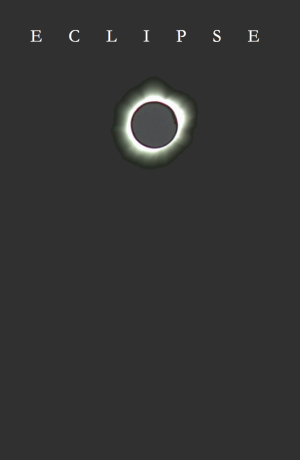Associate Editor, 2012-Present An attentive user of the Internet Archive might also chart the periodicity of Eclipse. From the twenty-three titles featured in the site’s first capture (February 15, 2002) to the most recent snapshot (November 10, 2012), a series of discrete archival release dates have been broken down for the reader. It is as though Dworkin is continually editing a magazine that is only periodically distributed by an unpredictable algorithmic publisher. In this sense, the online ‘archive’—already more akin to a special collection or perverse library—verges on the formal properties of the periodical, the generic conventions of which anticipate so much of the time-stamped internet. Here, the orbit of our hermeneutic circle returns to L=A=N=G=U=A=G=E magazine, featured in each capture, dating way back to the origin of Eclipse. This continual republication reminds us that the L=A=N=G=U=A=G=E Distributing Service photocopied as many issues of its own magazine as were ever printed in the first place. Time aside, the remnants of Eclipse alert us to how the site was used. Only the most popular works are captured. A web crawler called Alexa (another homage to the burning library) determines what is shown and how often sites are captured. There was not enough time for the images of Gil Ott’s Paper Air magazine to be paged through, nor enough exposure for Clark Coolidge’s Polaroid to be fully captured. Other facets of the archival interface are not captured at all: javascript navigational tools and unrecorded images mar the page with “Error” notifications, red X’s, and broken symbols. In this glitch-ridden record, the persistent presence of L=A=N=G=U=A=G=E marks the magazine’s continued use. Given that the name of the magazine is often applied to the expanded field of Language writing—up to and including a 2011 issue of the American Book Review—popular curiosity and course syllabi are sure to maintain the magazine’s Alexa ranking. Unlike paper books, whose sustained use promises disintegration, frequently accessed digital objects are only more likely to endure. If the Internet Archive maps the temporal and spatial conditions of the database, the variable formats of Eclipse’s facsimile images tell the most remarkable narratives. For the first four years of operation, the images were all presented in Graphics Interchange Format (GIF), on a highly compressed grey scale. Starting in 2006, these GIF files were gradually replaced by higher resolution JPEG files in full color. A few texts remain in GIF, with L=A=N=G=U=A=G=E magazine notable among them. This lossy format perfectly reflects the earliest stages of the periodical’s publication patterns. Poorly transcoded images of the magazine transport the reader to a medial environment of Xerox and photocopy, of distributing services and mail networks. This is the bibliographic paradox of compression. Beneath the accelerating arc toward greater “fidelity” to analogue formats, there is a strange magic in the lo-fi betrayal of the GIF image. Dispelling the illusion of immediacy, the lossy format reveals deep layers of technical remediation while pointing to the historical specificity of both original and facsimile. Enfolding the book within the mechanism of the format, the material conditions of both may only come to light in a moment when preservation is overshadowed by accessibility, when the archivist is eclipsed by the algorithm. |
 Ecliipse Archive, Associate Editor
|